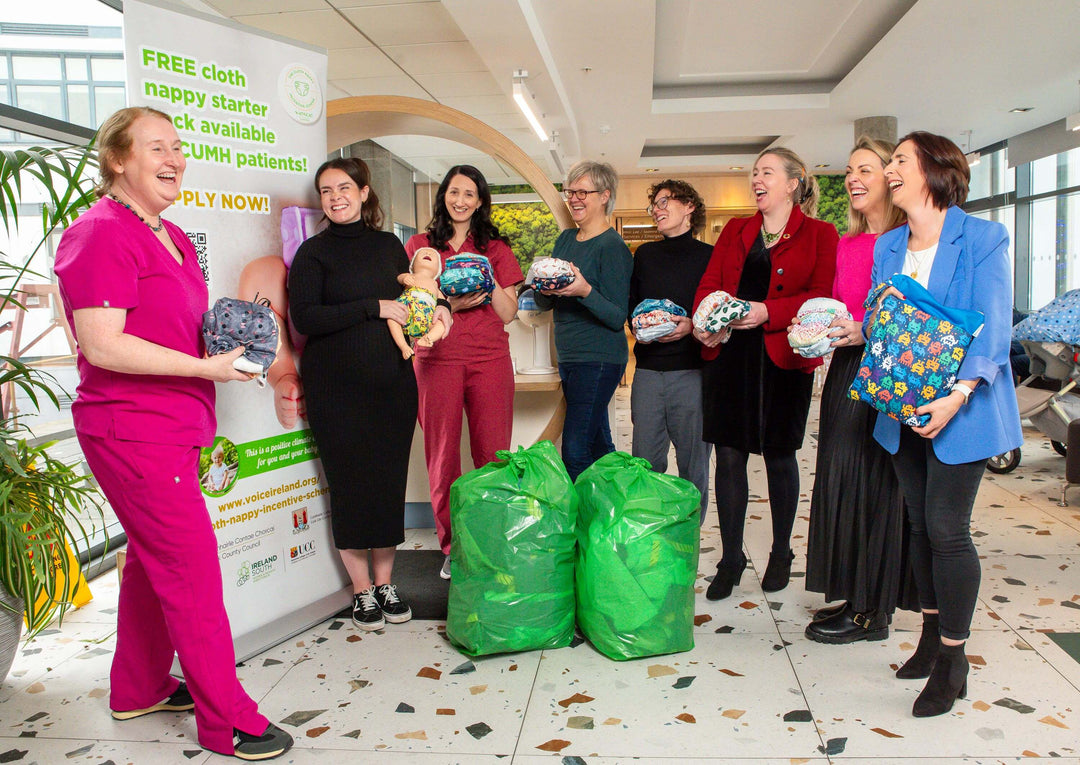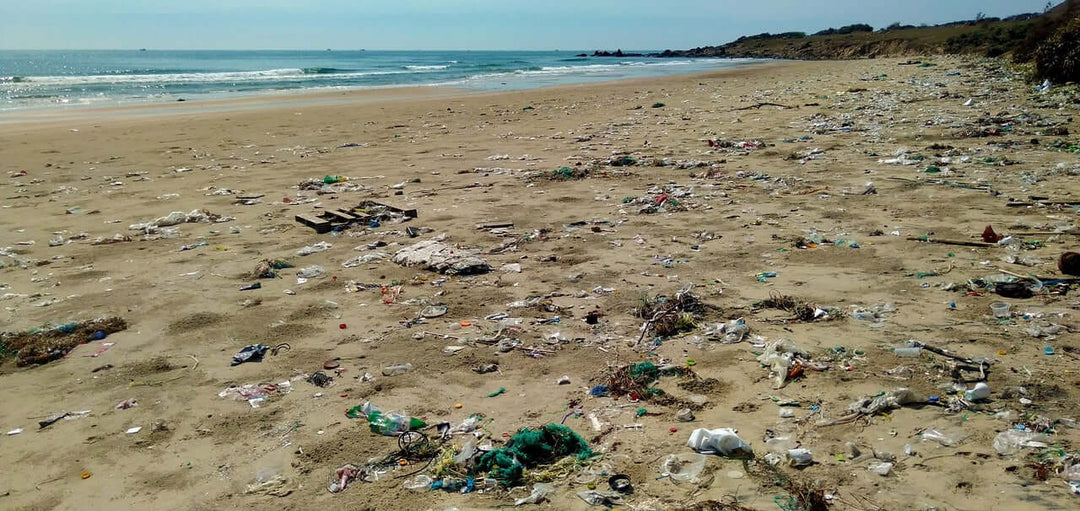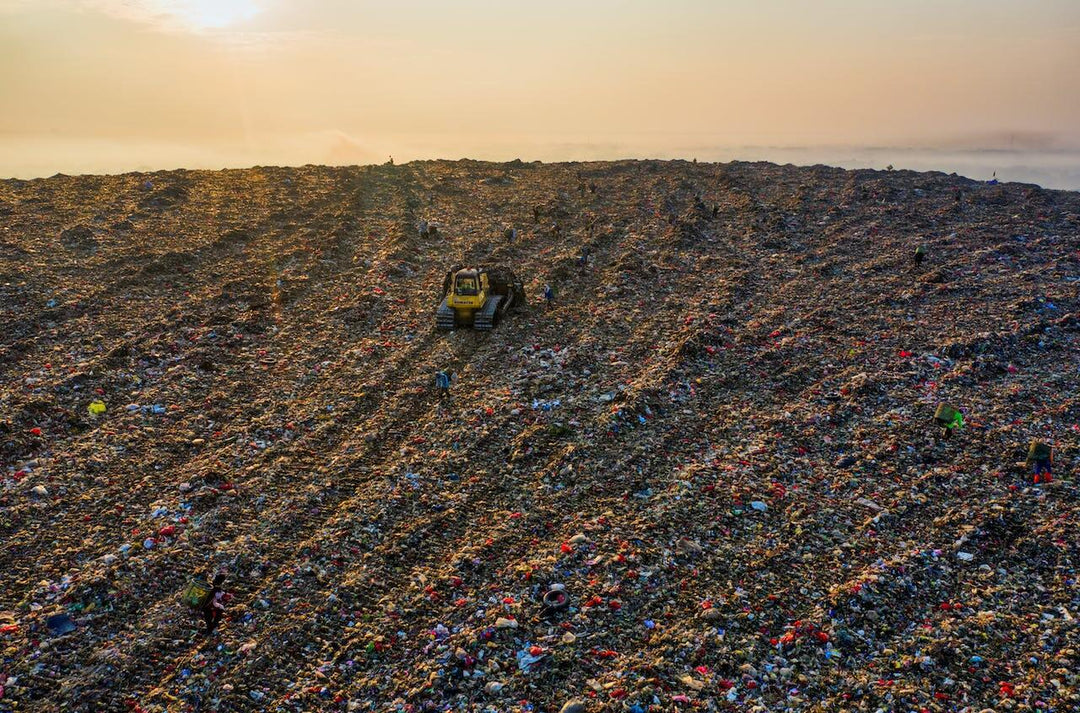Night Nappies: Using Cloth Nappies at Night
Using Cloth Nappies at Night: How to get through the night with your little one while using night time nappies
Every week our loyal customers ask us for advice and guidance, and one question really stands out amongst all other: what are the best nappies to use overnight. As babies start sleeping for longer stretches at night time, parents begin searching for a nappy that can last up to 12 hours overnight without leaking.
Before we begin, we wish to advise that the newborn babies should not sleep in the same nappy for the whole night time. Newborns have very sensitive skin and also frequently have bowel movements overnight, so 12 hours in a reusable night time nappy is not advised. However, once your baby is a few months old, they can usually make it through the night time without needing to change the reusable nappy or wrap.
Your options are:
Option 1: Whatever cloth nappies you use in the daytime
Some parents find that their normal daytime nappies work well for night time nappies. If this is the case for you, there is no need to change at night. You may want to add and extra booster to your night time nappies or pocket nappies, or change the type of insert, but if the style works for the 12 hours, keep at it.
Option 2: Pocket Nappies
Pocket nappies are simply a nappy shell that can be stuffed with almost any type of insert. The type of insert is entirely your choice. Some parents choose to use pocket nappies overnight by stuffing them with extra inserts, of which the most common include inserts made from bamboo, hemp, or microfibre materials. Many parents will try to mix different fibres within the night time nappies. For example, microfibre absorbs quickly and hemp absorbs a large amount slowly – so using one hemp and one microfibre insert inside your pocket reusable cloth nappy is a good combination for many parents. And don’t forget flats and prefolds, especially those which are made from hemp or bamboo; these are often the most absorbent options for stuffing pocket nappies to get through the nighttime hours.
Do be aware that pocket nappies could have two flaws with their system for nighttime use. The first problem is that the absorbency is centred in the crotch of the nappies and thus leads to an uneven distribution of soakage and potentially leaks. However, many older babies and toddlers prefer to sleep on their tummies or indeed their sides, and these babies will need absorbency around their hips to prevent leaks as well so please bear this in mind when choosing your night time system. The second problem that often occurs with using pocket nappies for 12 hours overnight is that sometimes they may leak, as the extra stuffing absorbency in the pocket part of the reusable night time nappy can cause the leg holes to gape.

Option 3: Fitted Nappies
Fitted nappies are often the favourite choice for night time use. A fitted cloth nappy consists of an absorbent material that wraps the whole way around your baby, so it is incredibly efficient at catching leaks from tummy or side sleeping babies. And since the whole nappy is absorbent even without a booster, a fitted nappy can hold a lot of liquid. As night time nappies go, fitted nappies are often the most popular to use.
Fitted nappies are usually manufactured from bamboo, cotton, or hemp fabric. There are a wide variety of brands of fitted nappies and the prices vary significantly. Keep in mind, these may need a good few washes to build up absorbency before they reach their full potential. In combination with a boost and a wrap, they are a great idea for night nappies, especially with a heavy wetter.
Option 4: Flat Nappies
Flat nappies are the very nappy that many people consider when they think of old school, old fashioned night nappies. This consideration does them a major injustice. A flat nappy is simply a large square or rectangle of fabric that is strategically folded around your baby. Like fitted nappies, a flat can be folded to offer absorbency around the hips and belly, making it a great choice for night time nappy use.
We certainly advise some practice, as it can take a little while to learn how to correctly fold a flat, but with a little practice, it becomes second nature. A flat fold needs to be secured, and many parents use old school pins, but most people prefer modern fasteners like a Snappi. For overnight use with older babies, many parents find that they need to double up to two flats. Simply lay one flat on top of the other and fold as normal. It really is that simple. Like fitted cloth nappies, flats are commonly made from the same materials; bamboo, cotton, and hemp.
Option 5: Covers
Fitted and flat cloth nappies need a waterproof cover, especially for overnight use. Without a cover, the chances of leakage are extremely high. Nappy covers are generally made from PUL or TPU fabric, but also may be made from fleece or wool.
PUL/TPU Covers:
A PUL/TPU cover is a thin waterproof shell that goes over a flat, fitted, terry or prefold nappy. The cover itself doesn’t have any absorbency, but it keeps liquids contained, and does this very well. Some parents have had good experiences using an unstuffed pocket shell as a nappy cover. That’s what cloth nappies are all about; make them work for you.
Fleece:
Fleece nappy covers, like PUL and TPU covers, are also waterproof. Unlike most wool covers, fleece can be thrown into the washing machine, thus ensuring they are very easy to care for. Fleece is often very inexpensive, making this an extremely attractive option for many parents.
Wool:
With our customers PUL or TPU is the most popular choice for overnight use, but wool is the close second choice for an overnight cloth nappy cover. Wool works by repelling moisture into the fitted nappy underneath it. When the cloth nappy is full, wool will absorb up to 30% of its own weight in moisture.
Option 6: Terry nappies
Terries make a great and super affordable night nappy. Like flats, you will need to fold these and fasten with a nappy fastener, but terry towelling nappies are worth it. These are another old school style nappy that have stood the test of time, and for good reason! You can use these alone or pop in an additional booster and/or a fleecy liner to keep baby's bum dry and then put a nappy cover (nappy wrap) over the entire ensemble to keep it all waterproof. Terry cloth nappies are considered a gold standard night nappy for most parents.
Option 7: Disposable nappies
Yep. We said it. And no, this is not a mistake.
Cloth nappies are all about what’s best for you and your baby. And many parents simply find that disposable nappies work best at night, so if this is you, go for it. It will cost more, but the saving you make from using cloth nappies during the day will still be incredibly noticeable in your back pocket.

And there’s more:
Inserts and Liners for night time
If you want to boost the absorbency of an overnight cloth nappy, consider adding extra inserts or boosters to the nappies. Most inserts can go directly against your baby’s skin, but we advise you do not do this with microfibre. This can cause a rash if placed directly against skin as it pulls moisture from baby's skin. If you accidentally do this, and see your baby’s skin react, we advise you seek medical attention.
Fleece liners also help your baby feel dry overnight whilst being incredibly cheap and durable, plus you can wash them along with your normal nappy laundry.
Washing your Reusable Nappies
Having a good wash routine is particularly important with overnight nappies.
Overnight nappies are usually the first nappies to show flaws in your wash routine. They’re exposed to large amounts of urine for long stretches of time. Additionally, the nappy may be urinated in, dry, and then be urinated on again, allowing ammonia crystals to be deposited and reactivated, so please do bear this mind when the baby wakes up.
Cloth nappies used as night nappies shouldn’t smell strongly of ammonia, however it is typical for overnight nappies to smell like urine. Some parents find it helpful to rinse out overnight nappies in hot water first thing in the morning, or use your pre-wash routine on these nappies before your main wash day. Once you do your quick wash cycle, you can place them in your wet bag, nappy pail, or nappy bin until your main wash day.




